After 2 weeks of research and contemplation I decided to pull the plug on the project...or rather find another way to complete it. I would like to present my new project bike: 1982 Honda V45 Sabre (VF750S).
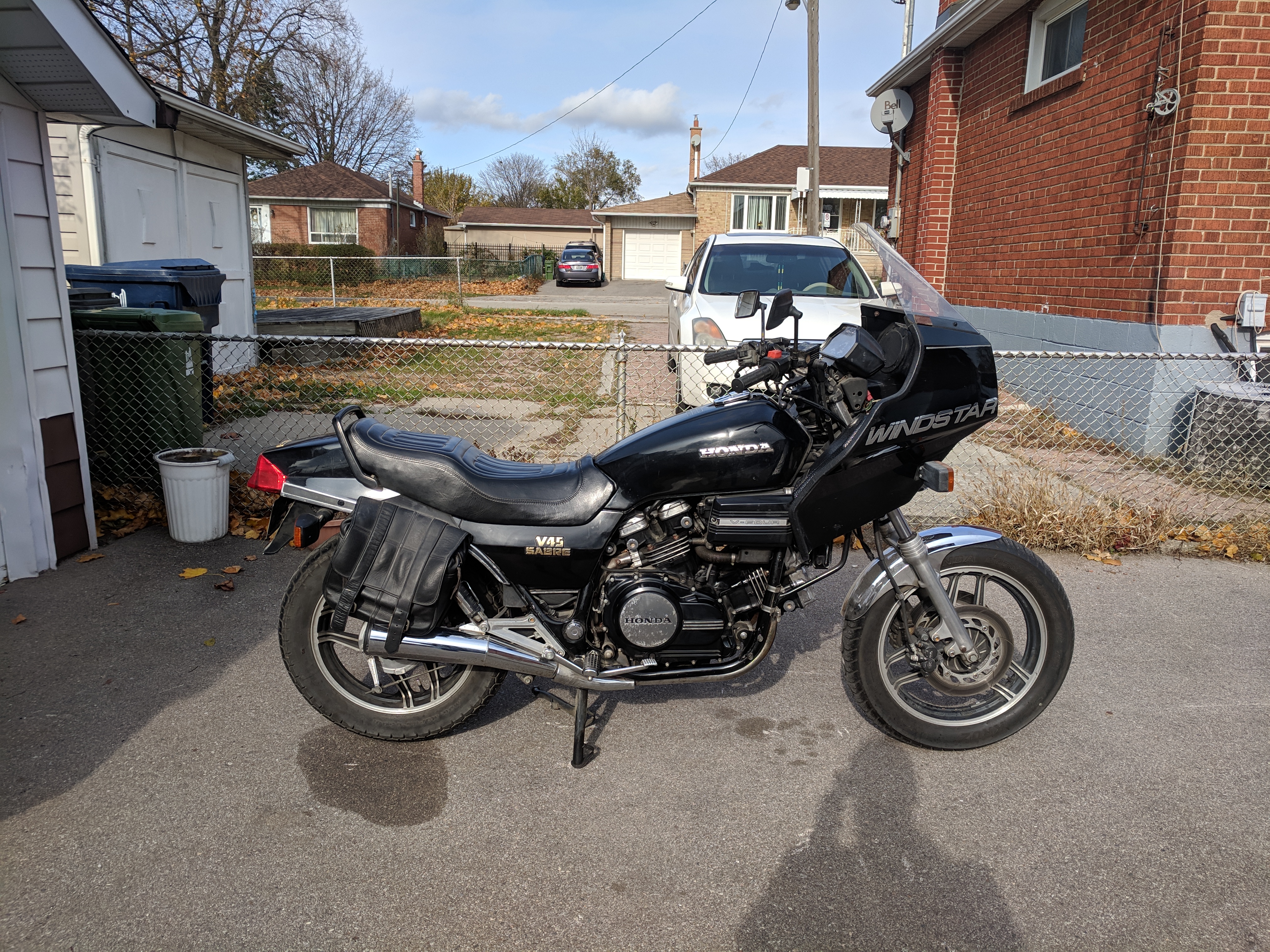
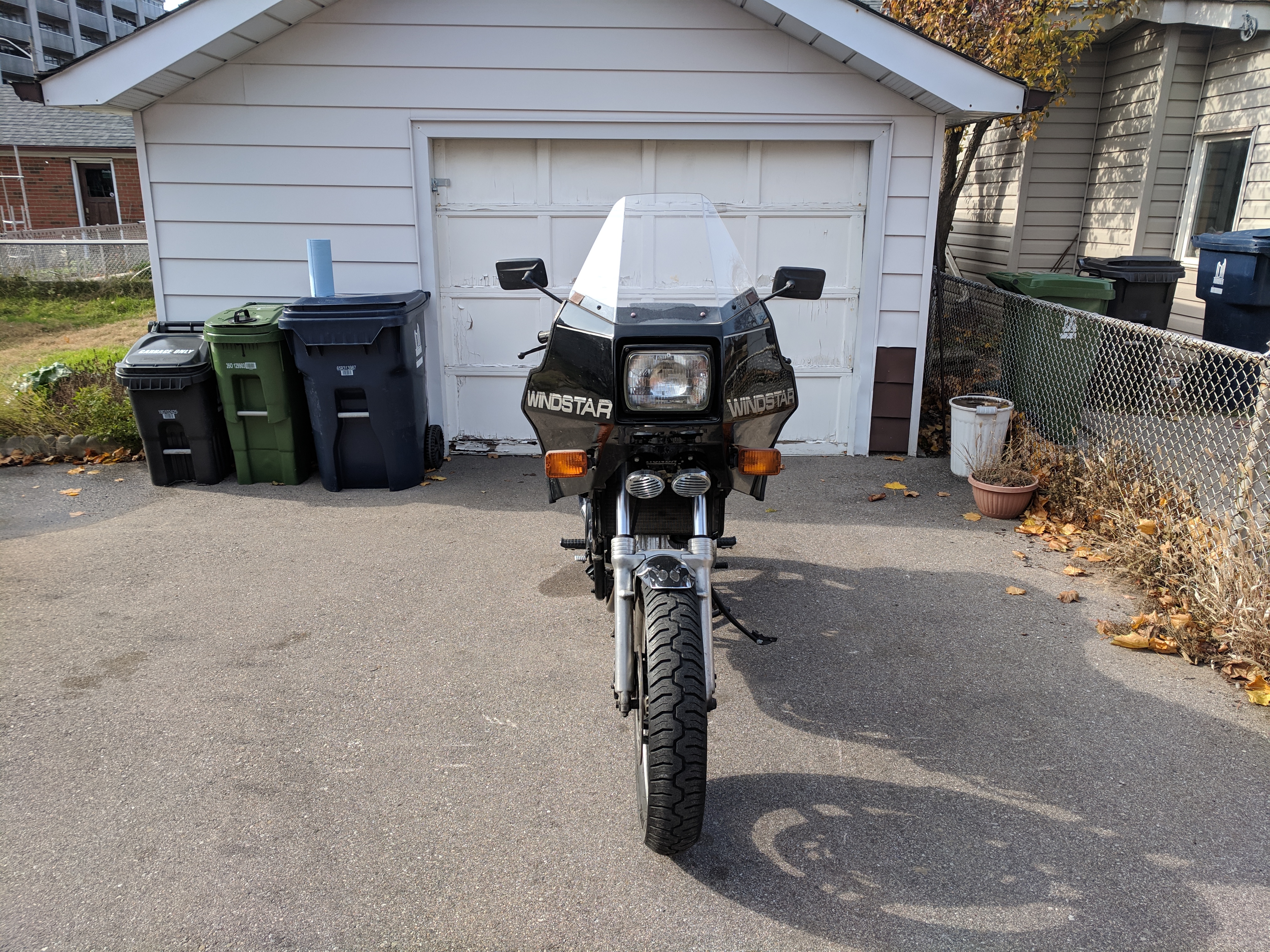
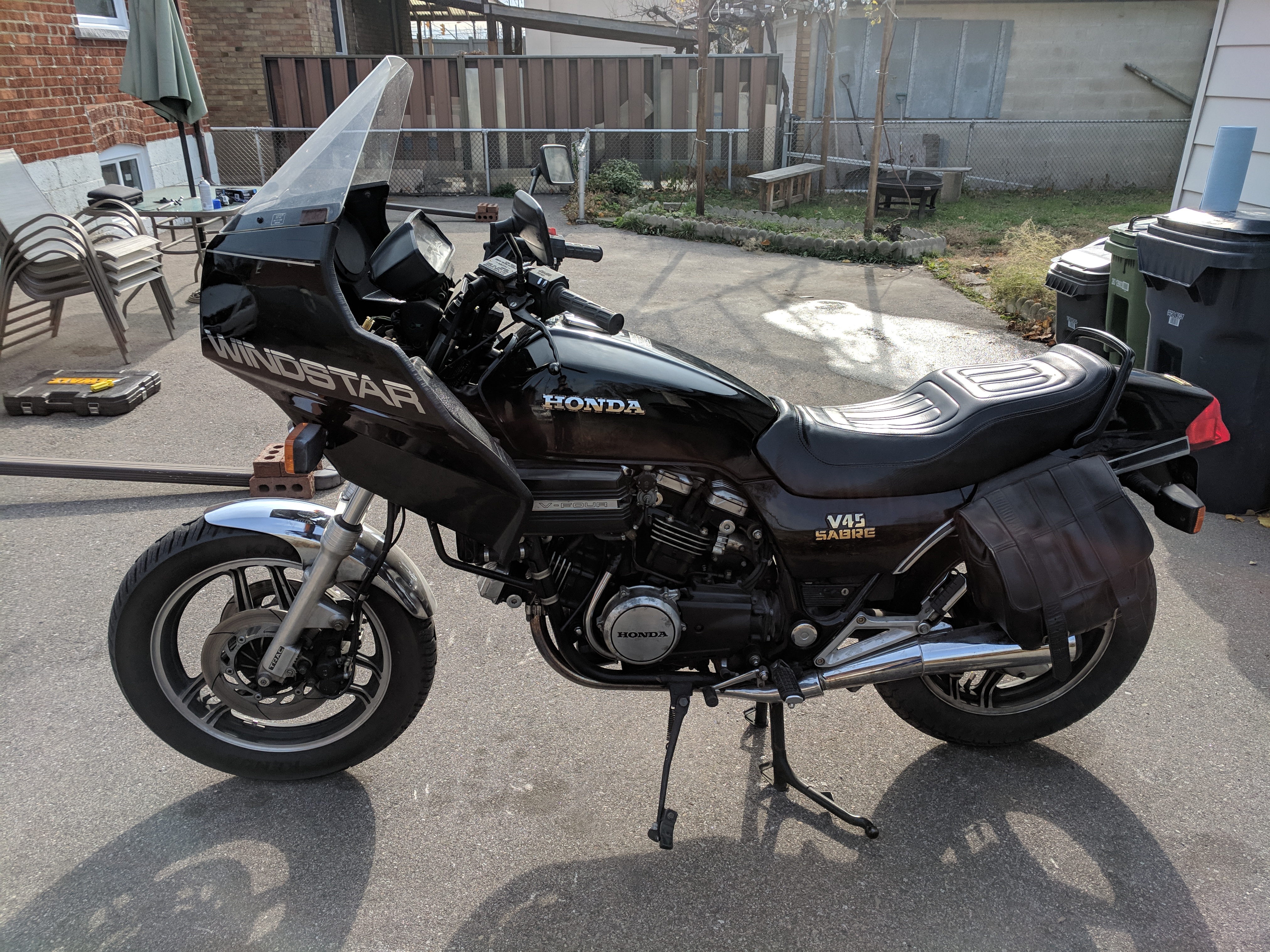
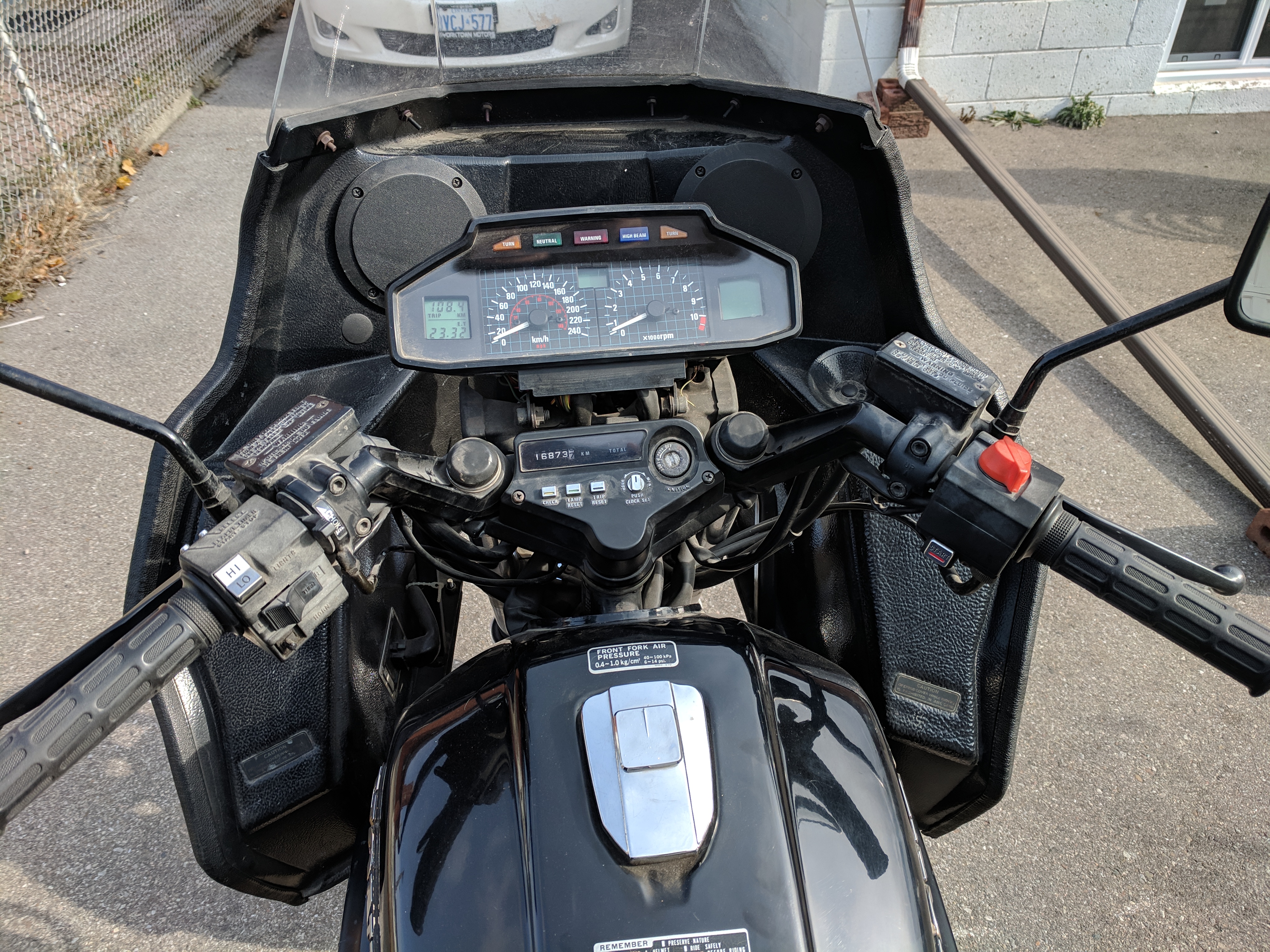
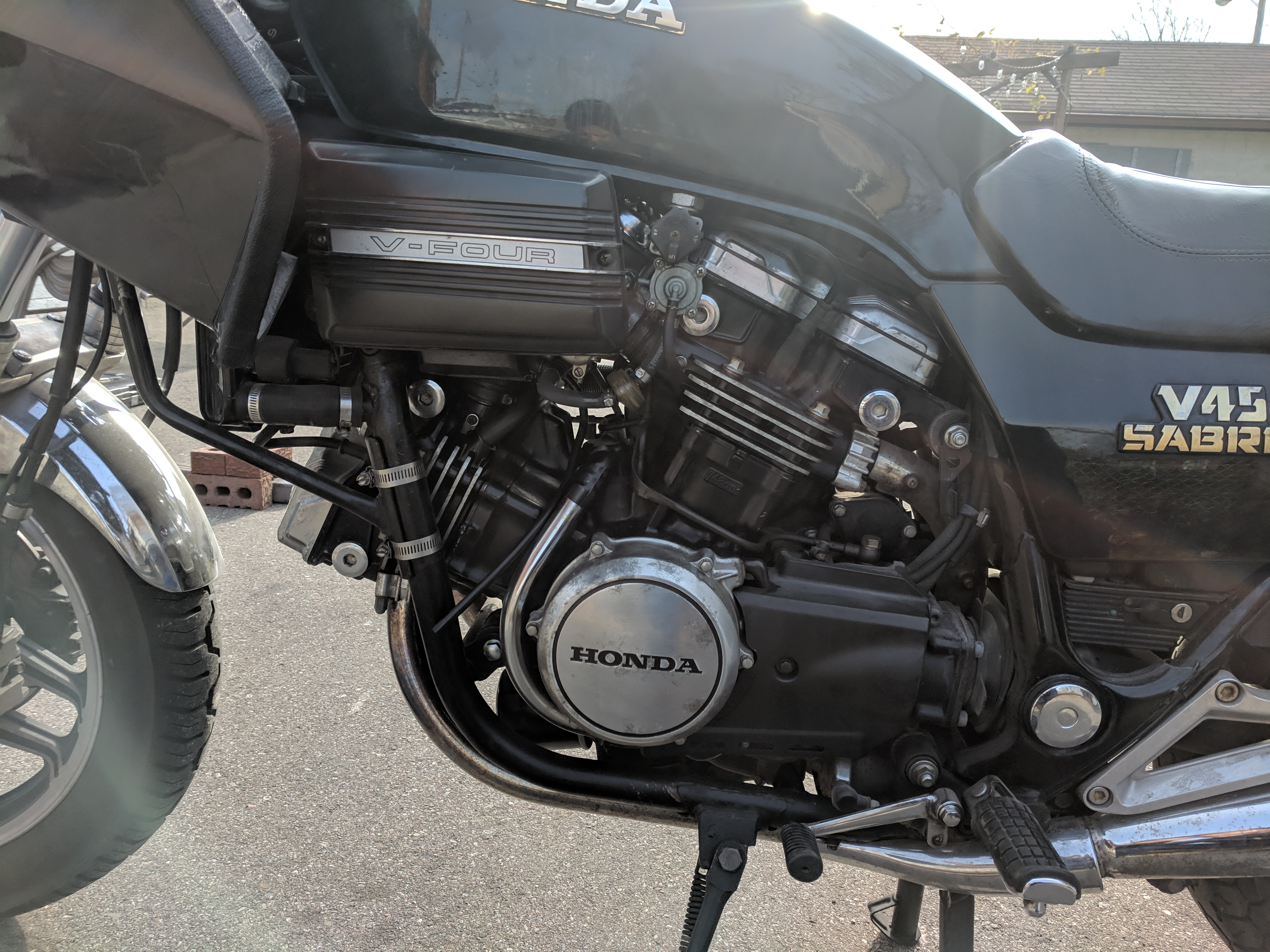
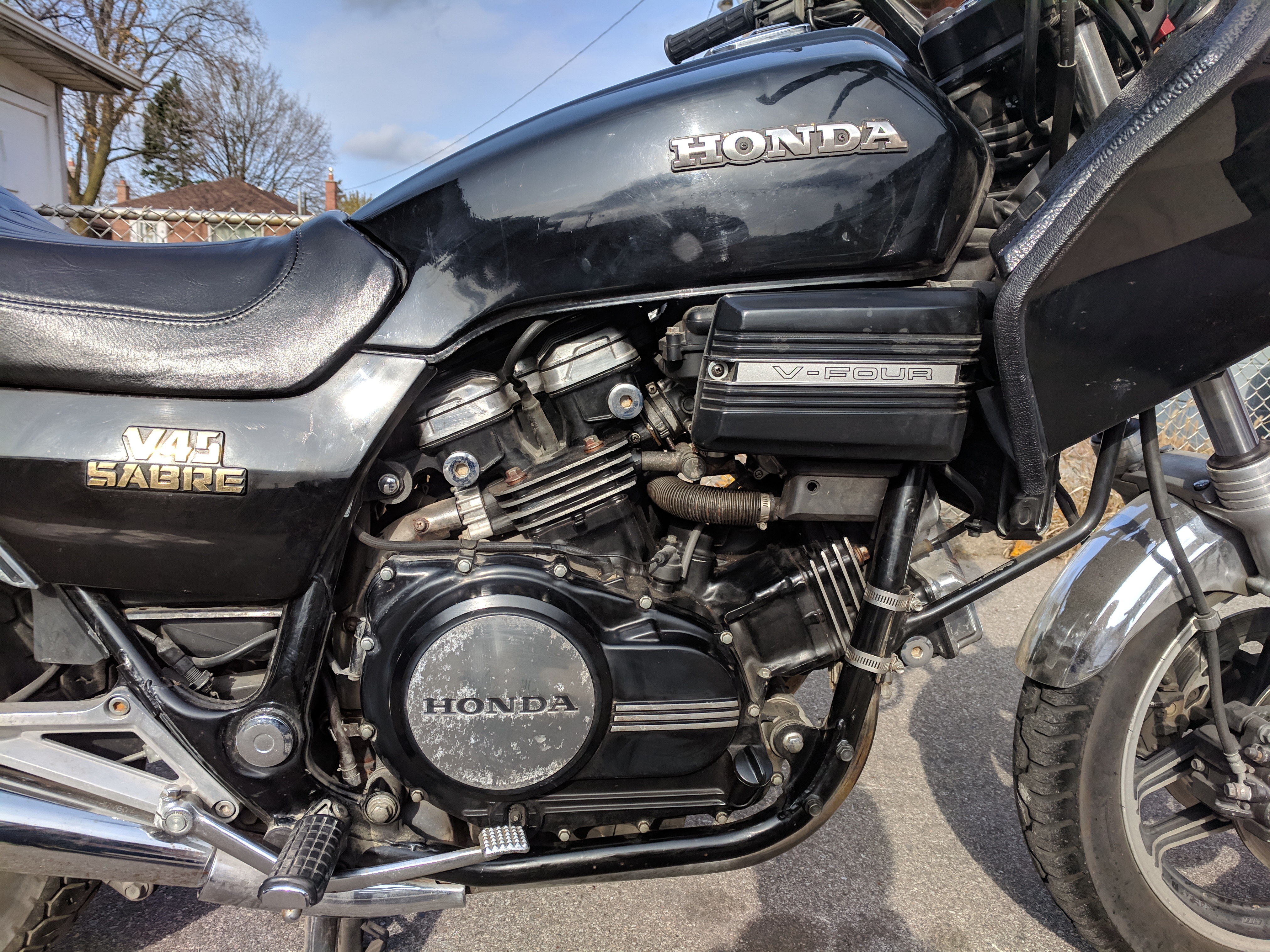
The old bike (1983 Sabre) will be kept as a parts bike and a learning ground for experimenting and doing practice work. This decision was made based on the work that needed to go in around fixing the engine case and the frame. These fixes would have taken far too much time and resources, and ultimately would have still kept the bike pretty unsafe. So I decided to grab something in a much better condition and build on that.
Some details about the new bike (1982 Sabre):
- 16,874 km
- the engine runs
- it has all the original equipment
- has an added front fairing and saddle bags
- all electronics works
- the exhaust was replaced in 2012, and is in really good condition
There is of-course some problems with the bike since it is 36 years old:
- the carburetor setup has an air leak somewhere in it. So the bike idles at 3500RPM once it warms up
- the choke lever doesn't stick, it just rolls back to nothing if let go
Since last time I didn't really add the history of the bike here it is this time. The Sabre/Magne v4 platform was introduced in 1982 by Honda. They had built a unique V4 engine that was suppose to compete with the Inline 4 engines of the late 70s and early 80s. It was truly a marvel for its time. Honda had packed in a lot of technology into a machine never before seen. This was the industry's first ever liquid cooled, four cylinder, 90-degree tandem V engine. The engine provided exception low end torque, and balance, all into a much more narrow package. It also revved up to 10,000RPM, producing 82hp @ 9500RPM and 52ft.lbs @ 7500RPM. This made the bikes top speed just over 200km/h and standing 1/4 mile time 12.3s.
The Sabre was also equipped with a drive shaft, which made Honda's overall package match exactly what the market was looking for. A comfortable 750cc motorcycle with reliability on its side and plenty of power. This is why Honda released it in two configurations, the standard version of the Sabre, and the cruiser version of the Magna. Later on the Interceptor was also introduced as a more sporty package.
Not only was Honda making something that was reliable, innovative, powerful, and a great machine, but they were also packing it with a number of additional technologies. The Sabre came equipped with auto-canceling turn signals, as well as something Honda calls TRAC (Torque Reactive Anti-dive Control). The TRAC system uses a combination of oil pressure and brake caliper force to modulate the resistance to rapid compression in the fork. 4 settings are available with it.
All in all a great motorcycle to work with. Stay tuned for the next steps and fixes.